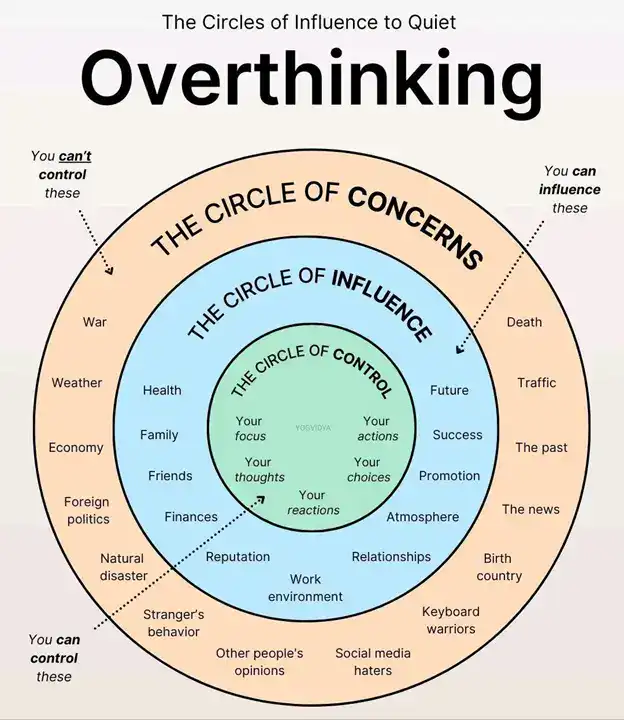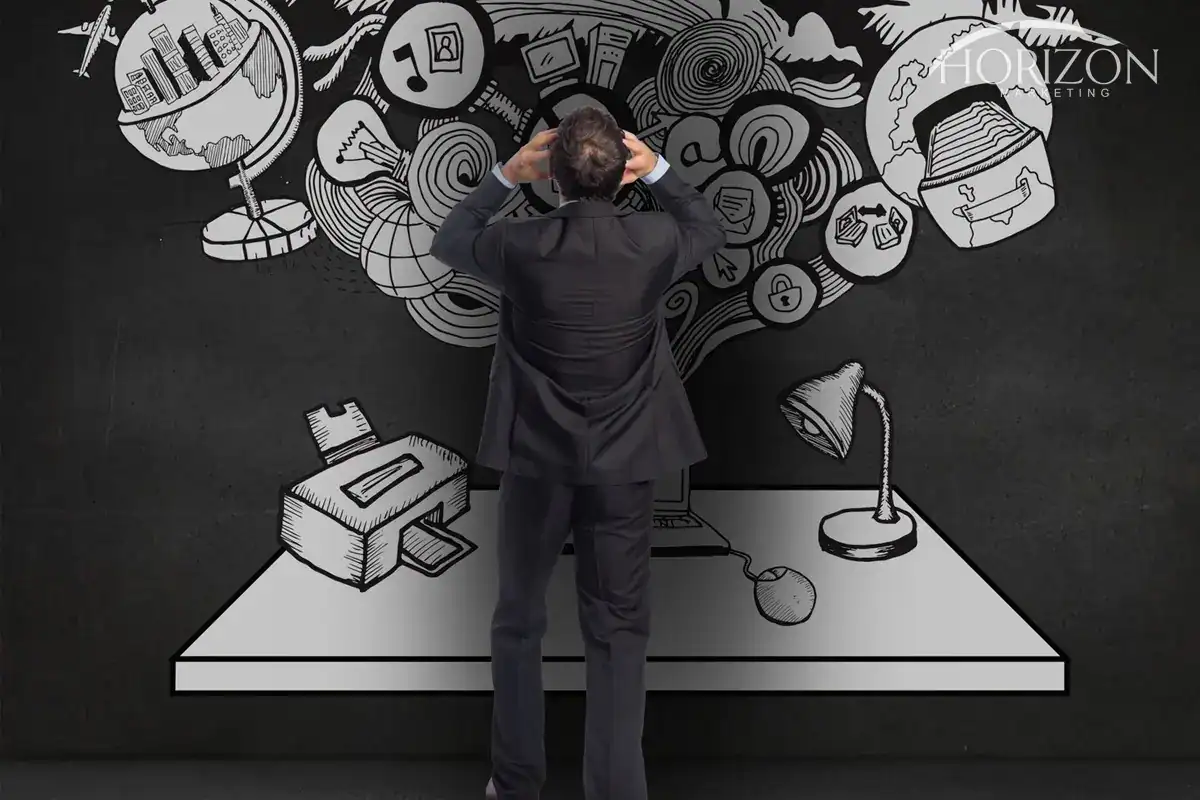In our fast-paced, hyper-connected world, it’s easy to become overwhelmed by endless worries – from global crises to social media drama. The Circles of Influence infographic presents a powerful mental model to help us distinguish between what we can and cannot control, freeing us from the paralysis of overthinking. This article explores how to apply this framework to reduce anxiety and focus your energy productively.

Understanding the Two Circles
The infographic divides our concerns into two fundamental categories:
1. The Circle of Concerns (What You Can’t Control)
These are external factors that may affect us but remain beyond our personal influence:
- Global events (wars, economic shifts)
- Natural phenomena (weather, disasters)
- Other people’s choices and opinions
- Systemic societal issues
2. The Circle of Influence (What You Can Control)
These are areas where our thoughts and actions can make a tangible difference:
- Personal health and habits
- Relationships with family/friends
- Financial decisions
- Professional development
- Daily routines and environments
The key insight? Overthinkers spend most of their mental energy in the Circle of Concerns, while emotionally intelligent people focus on their Circle of Influence.
Why This Matters: The Psychology Behind Worry
Research in cognitive behavioral therapy confirms that chronic stress often stems from:
- Misplaced focus (dwelling on uncontrollables)
- False sense of responsibility (feeling accountable for everything)
- Cognitive distortions (catastrophizing unlikely scenarios)
The Circles framework acts as a mental filter – helping us recognize when we’re investing energy in fruitless worries versus actionable improvements.
Practical Applications: Shrinking Anxiety, Expanding Influence
Step 1: The 24-Hour Reality Check
When a concern arises, ask:
- “Is this within my control?”
- “Will worrying about this help in any way?”
- “Can I take any constructive action?”
Example: Instead of stressing about a recession (uncontrollable), focus on building emergency savings or learning new skills (controllable).
Step 2: The Influence Expansion Strategy
Gradually widen your Circle of Influence by:
- Replacing consumption with creation: Spend less time doomscrolling news and more time building skills
- Implementing the 1% Rule: Daily small improvements in health, knowledge, or relationships compound over time
- Setting “Influence Boundaries”: Limit exposure to energy-draining people/media
Step 3: The Acceptance Practice
For uncontrollables, adopt Stoic principles:
- “I cannot control [event], but I can control my response.”
- Use mindfulness techniques to release unproductive thoughts
Common Pitfalls to Avoid
- The “Concern Creep” Trap: Allowing media/social networks to constantly inject new worries into your psyche
- False Influence: Believing you can control others’ feelings or life outcomes
- Neglect of True Influence: Overlooking controllable areas like sleep, nutrition, or skill-building
Real-World Examples
- Career: Instead of worrying about layoffs (uncontrollable), focus on networking and upskilling (controllable)
- Relationships: Rather than obsessing over others’ opinions, invest in being present with loved ones
- Health: Replace anxiety about genetic risks with consistent exercise and preventive care
The Ripple Effect of Focused Influence
When you concentrate on your Circle of Influence:
- Reduced anxiety: Your brain stops fighting imaginary battles
- Increased agency: You build confidence through small wins
- Unexpected opportunities: Action in controllable areas often improves “uncontrollable” situations indirectly
Tools to Maintain Focus
- Journaling: Regularly categorize concerns into the two circles
- The Eisenhower Matrix: Prioritize tasks by urgency/importance
- Digital Minimalism: Curate information inputs to reduce unnecessary concerns
Final Thought: The Paradox of Control
Ironically, by accepting what we cannot change, we gain greater mastery over what we can. The Circles of Influence model isn’t about apathy toward global issues – it’s about directing your finite energy where it can create real change, starting with your own life.
Challenge: For one week, consciously redirect concerns from the outer circle to the inner circle. Notice how your stress levels and productivity transform.

